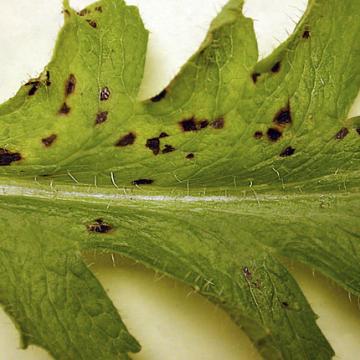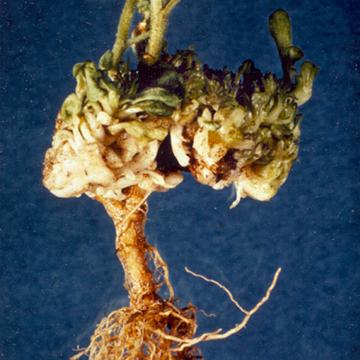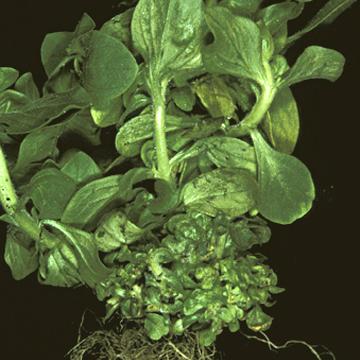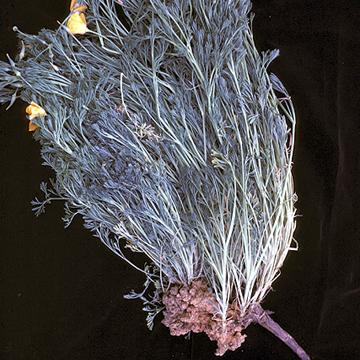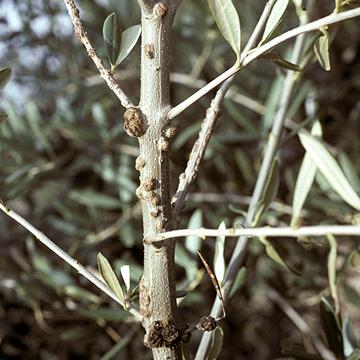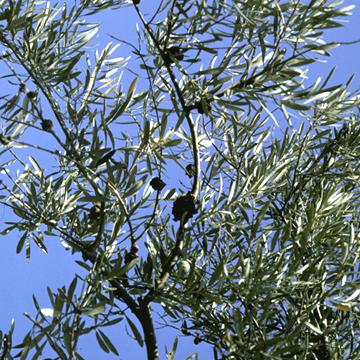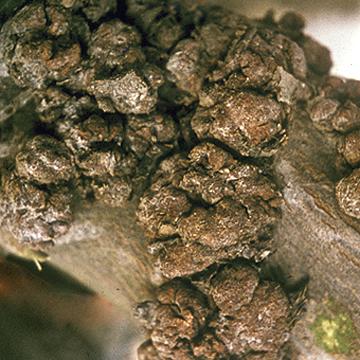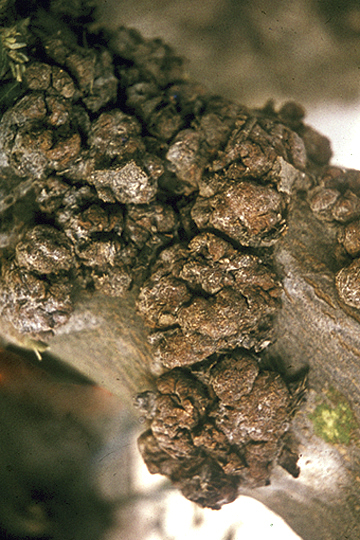DISEASE: Bacterial blight
HOST: Poppy
The disease begins with water-soaked lesions that turn brown to black. They may be surrounded by a translucent ring. Buds, leaves, flowers, and pods are affected.
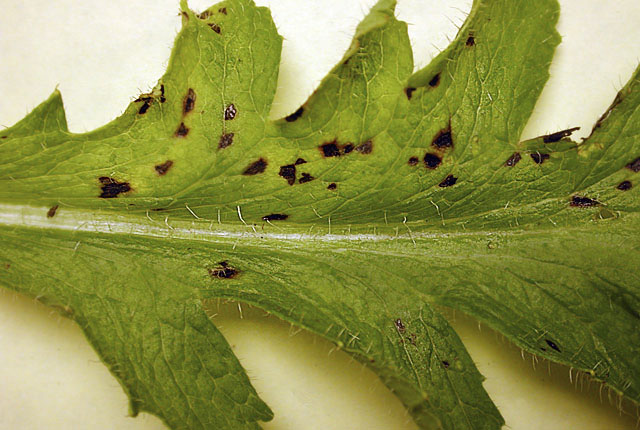
Bacterial blight | Poppy
DISEASE: Bacterial blight
HOST: Poppy (Eschscholzia californica)
PATHOGEN: Xanthomonas campestris pv. papavericola
SOURCE: M. Daughtrey
DISEASE: Bacterial fasciation (Leafy gall)
HOST: Petunia
Note hyperplasia and leafy galls.
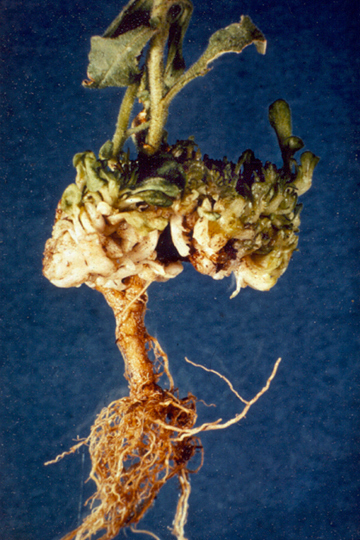
Bacterial fasciation (Leafy gall) | Petunia
DISEASE: Bacterial fasciation (Leafy gall)
HOST: Petunia (Petunia sp.)
PATHOGEN: Rhodococcus fascians
SOURCE: M. Shurtleff
DISEASE: Bacterial fasciation (Leafy gall)
HOST: Petunia
Leaf proliferation at crown region.
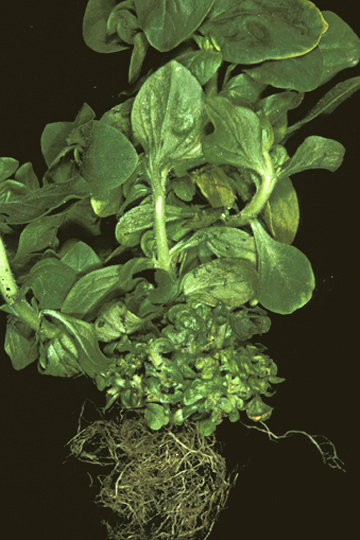
Bacterial fasciation (Leafy gall) | Petunia
DISEASE: Bacterial fasciation (Leafy gall)
HOST: Petunia (Petunia hybrida)
PATHOGEN: Rhodococcus fascians
SOURCE: R. Raabe
DISEASE: Crown gall
HOST: Poppy
Crown gall of California poppy, a native wild flower.
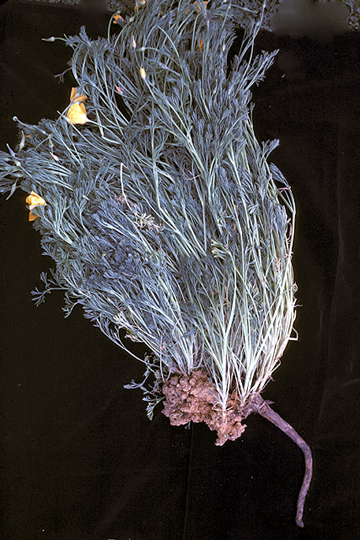
Crown gall | Poppy
DISEASE: Crown gall
HOST: Poppy (Eschscholzia californica)
PATHOGEN: Agrobacterium tumefaciens
PATHOGEN SYNONYM: Rhizobium sp.
SOURCE: M. Schroth
DISEASE: Olive knot
HOST: Olive
Multiple infections of young stems. The bacterium invades vascular tissues during certain times of the year and may be isolated from branches that appear healthy.
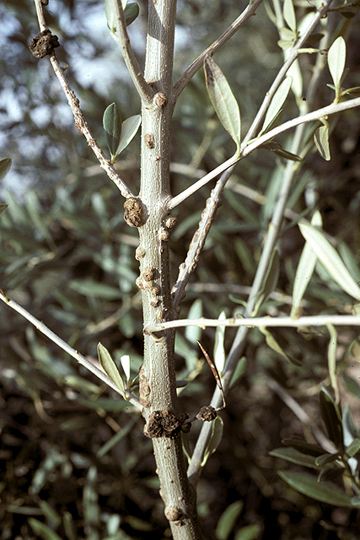
Olive knot | Olive
DISEASE: Olive knot
HOST: Olive (Olea europaea)
PATHOGEN: Pseudomonas savastanoi pv. savastanoi
SOURCE: M. Schroth
DISEASE: Olive knot
HOST: Olive
Tree with knots/galls on branches along with twig dieback, which is associated with knots. Fusarium and Diplodia spp. infect through knots and are thought to be main reason for dieback.
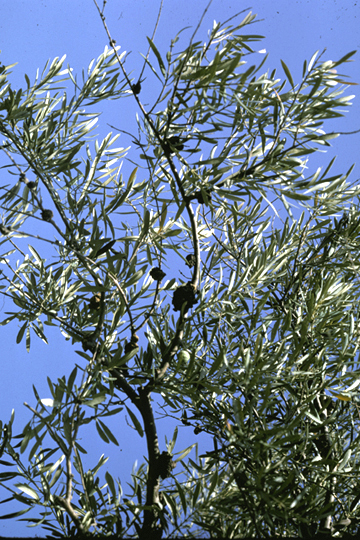
Olive knot | Olive
DISEASE: Olive knot
HOST: Olive (Olea europaea)
PATHOGEN: Pseudomonas savastanoi pv. savastanoi
SOURCE: M. Schroth


